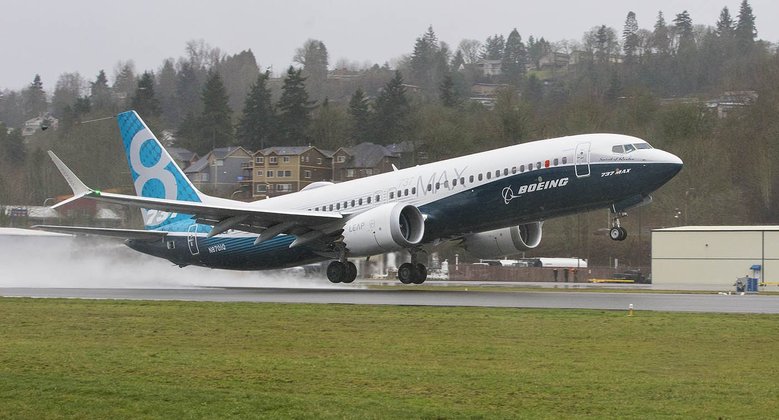Leeham News and Analysis
There's more to real news than a news release.
Virgin America does have some attractive attributes
March 29, 2016, © Leeham Co.: A report that JetBlue and Alaska Airlines submitted bids to buy Virgin America spurs the thought: this isn’t as wacky as it appears on

Virgin America route map. Click on image to enlarge.
the surface.
When news emerged last week that VA was shopping itself after interest was expressed, many thought, quite naturally, why?
Dan Reed neatly summarizes this argument in his column at Forbes.
Virgin America has few tangible assets. It leases all but about seven of its 10 Airbus A319s and 50 A320s. It’s not dominant in any city or route it serves. The leases are probably, on a relative basis, rather costly.
It has few slots at the few slot-controlled airports it serves (Chicago O’Hare, New York La Guardia and JFK airports and Washington Reagan National Airport), and only a few gates at any given airport—hardly enough to really boost presence of either Alaska or JetBlue.
Why should either airline want Virgin America?
Here’s why.
IRKUT MC-21 analysis, Part 4. Performance with PD-14
By Bjorn Fehrm
Subscription required.
Introduction
March. 14, 2016, ©. Leeham Co: In three articles we have been looking at the new Russian single aisle aircraft, Irkut MC-21, from United Aircraft and the new Russian engine that is being developed for the aircraft, the PD-14.
The PD-14, which is offered as an alternative to the base engine for the aircraft, the Pratt & Whtiney PW1400G, was analysed in our Part 3 article. We now mount the engine on the MC-21 and explore the difference in performance compared to the base engine.
Summary:
- The PD-14, which is a new engine designed by the Aviadvigatel company, is a clear step forward for the Russian turbofan industry.
- In our analysis in Part 3, we could see that it has a classical direct drive construction with a good level of technology in several parts.
- Weight and installation dimension are similar to the competition but efficiency is a bit behind.
- We now explore the performance of the MC-21 with the Russian engine.
The MAX flies ahead of time
By Bjorn Fehrm
2 February 2016, ©. Leeham Co: The Boeing 737 MAX flew for the first time Friday. On Saturday it was in the air again. Boeing has communicated they will deliver the first aircraft to Southwest next year in the third quarter. We doubt it.
It will be earlier, barring a major problem cropping up (and the chances are good there will be none).
Delivery of aircraft projects ahead of time is almost unheard of. And when it is Boeing that looks like being early, people start to think about the Dreamliner debacle. It was over three years late.
We would say: absolutely be skeptical, but in this case, there is reason for optimism.
Analysis: Sukhoi’s regional jet Superjet 100
By Bjorn Fehrm
Subscription required
Introduction
18 January 2016, © Leeham Co: Russian aircraft have never succeeded in penetrating the Western market. But then they never really tried, until now. They were designed for the Soviet Union captive market, including the partner states that historically participated in or were friendly to the communistic system. One comes to think of China, Egypt, Libya, Cuba and Nicaragua. The Sukhoi Civil Aircraft Company (SCAC) Superjet 100 (SSJ100) is the first Russian aircraft specifically designed from the outset to compete on a world market.
The Sukhoi Civil Aircraft Company (SCAC) Superjet 100 (SSJ100) is the first Russian aircraft specifically designed from the outset to compete on a world market.
We analyse its basic design and performance in comparison to the market leader in 100 seat regional flying, Embraer’s E190.
Summary:
- The SSJ100 is a half a generation younger design than the Embraer E190. It has modern aerodynamics, IMA-based modular avionics and an advanced Fly-By-Wire system.
- The feedback-based Fly-By-Wire enables a tight aircraft design with low wetted areas.
- The SSJ100 engines, SaM146, can best be described as a shrinked and cleaned up CFM56. They have the efficiency level of the E190’s CF34-10E.
- The aerodynamics and engines combine to give the SSJ100 a single digit edge in fuel burn over the E190.
Bjorn’s Corner: What did we learn in 2015; engines
15 January 2016, ©. Leeham Co: Last week we looked back on what happened in 2015 on the airframe front. We finish the retrospective by looking at what turbofan engine technology came to market in 2015. New engine technology is vital, as it is on the engine side that the quest for higher fuel efficiency has the largest successes.
While advances on the airframe side might bring an additional 5% per generation, the engines typically increase their efficiency per new generation with up to three times that value. Fuel efficiency per delivered thrust unit was improved with a whopping 15% over the engine it replaces for the Pratt & Whitney Geared Turbofan (PW GTF). It was certified for use on the Airbus A320neo in Q4 2015
The competing CFM LEAP-1A shall deliver the same improvement level to the A320neo once it is certified in the summer of this year. This engine has a smaller sister that started ground tests last year, the LEAP-1B, which is developed for the Boeing 737 MAX series.
The engine that is easily forgotten is the Rolls Royce Trent XWB. It entered service on the Airbus A350-900 during the year. It brings an improvement level of around 10% compared to the engines of the aircraft that the A350 replaces (Airbus A340/A330ceo and Boeing’s 777-200 range).
Airbus annual press conference 2016
By Bjorn Fehrm
Introduction
 12 January 2016, ©. Leeham Co: Airbus held its annual press conference in Paris today against a backdrop of record 2015 deliveries. The year that went past was consequently a good one for Airbus. Orders were at a record high for the third year in succession and deliveries exceeded previous years for the 13th year in succession.
12 January 2016, ©. Leeham Co: Airbus held its annual press conference in Paris today against a backdrop of record 2015 deliveries. The year that went past was consequently a good one for Airbus. Orders were at a record high for the third year in succession and deliveries exceeded previous years for the 13th year in succession.
But the Airbus sky wasn’t totally cloud free; the large A380 only got sales by having ANA mop up the mess after Japan’s Skymark bankruptcy and production of the new A350 was hindered by a sole source lavatory supplier.
The result was that Airbus missed two 2015 delivery targets, the 15 per year for A350 (delivered 14) and the 2016 delivery of the first A320neo. The latter was because of “paperwork issues” related to certain things being “late to finish” ahead of certification. Read more
Bjorn’s Corner: Engine efficiency revisited
18 December 2015, © Leeham Co:Part of the discussion following last week’s article around quad or twin engine airliner designs was about engine efficiency and specifically around the engine’s thermal efficiency as a function of Pressure Ratio, PR.
I got the question, if an engine working at a higher pressure ratio was therefore working at a higher thermal efficiency. I knew enough on the subject to know I did not have a good answer without doing a bit of checking; jet engines are no simple contraptions.
I have previously written about turbofan efficiency in a Corner. The article was focused around propulsive efficiency. Now we will have a look at the other part of overall engine efficiency, the thermal efficiency or the efficiency of the core.
Bjorn’s Corner: Twins or quads?
11 December 2015, ©. Leeham Co: The debate over two or four engines for long range aircraft is as old as the jet airliner. A number of myths have been pedaled over the years over the virtues of the one over the other. The myths have even been presented by airline CEOs as “facts that are known in the industry.”
Having done several in-depth comparisons of two-vs-four engined long range aircraft, we can’t find the patterns that these myths propel: that a quad is less efficient than a twin and should have higher maintenance costs. What we see is that it is all dependent on what one compares and to what technology generation the one or the other aircraft belong.
When we didn’t get the same results as the myths on a number of areas, we started to wonder what could have created the myths in the first place. Looking at what four engined airliners could have been the source of the rumours, we started to see a pattern. It was a pattern of apple-and-oranges being compared and wide ranging conclusions being drawn.
Here is what we found. Read more




Airbus needs more vertical integration, says official
Subscription Required
Introduction
John Leahy, chief operating officer-customers. Airbus photo.
March 3, 2016, © Leeham Co.: Airbus may well have avoided the supplier-driven delivery delays on its A350s had the company brought some key work in-house and become more vertically integrated, says its chief operating officer-customers.
Airbus has been bedeviled by delays in business class seat and galley deliveries from supplier Zodiac, resulting in delayed deliveries of the A350-900 to several airlines.
John Leahy, in an interview with LNC at the International Society for Aircraft Transport Trading (ISTAT) conference Feb. 29-March 1 in Phoenix (AZ), said Airbus shouldn’t be at the mercy of suppliers of interiors. His wide-ranging interview also touched on several other topics.
Summary
Read more
3 Comments
Posted on March 3, 2016 by Scott Hamilton
Airbus, Boeing, Bombardier, CFM, CSeries, ISTAT, Leeham News and Comment, Pratt & Whitney, Premium
737-7, 737-700, 787, A319, A320NEO, A330-900, A350, Airbus, Boeing, CFM, GTF, ISTAT, John Leahy, LEAP, Pratt & Whitney, Zodiac